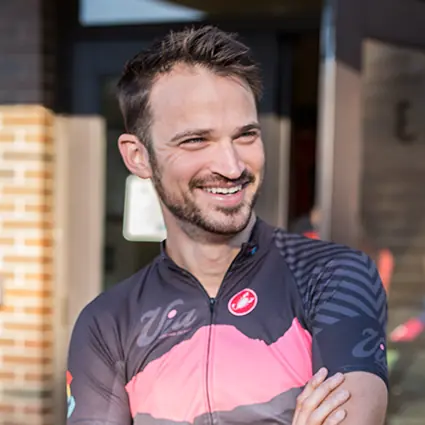HISTORY
Father Claude Allouez: Baptizer of Niles, Michigan
A French Jesuit's final mission left spiritual roots still growing in southwest Michigan
BY AARON HELMAN // POSTED MAY 12, 2025

In 2024, my wife and I gathered up some friends and drove to Detroit so that we could cycle some 200 miles back west again. It's certainly one of the more roundabout ways to wind up in Niles, Michigan. But it's nothing compared to the journey of Father Claude Allouez, a devout Catholic Frenchman whose influence is still felt across southwestern Michigan more than four centuries after he was born.
The priest's piety would have made him believe that his evangelistic efforts could affect permanent change in the region, and his faith would not let him down. He wouldn't be surprised that the echoes of his work continue to reverberate throughout Michigan, even today.
That's exactly what a faithful man expects.
A subscription to the News-Times is always free.
Enter your email address and get new issues straight to your inbox.
Allouez was born in 1622 at Saint-Didier-en-Velay in France and spent his first thirty years in the shadow of the Alps, receiving his education at a college on their lower slopes, then spending 16 years cutting his teeth as a Jesuit novice at dozens of villages scattered along their idyllic ridges.
It might have been how he happily spent the rest of his life, at least until someone noticed his knack for learning languages or when they realized how useful such a talent might be. In 1658, Allouez was a year beyond his era's average life expectancy, but somehow, his journey was just beginning.
Father Allouez received orders that sent him away from the only home and country he'd ever known and to which he would never return. The long trip across the Atlantic would give him plenty of time to learn as many Native American languages as he could, and he was going to need a lot of them. Among other things, his mission was to Christianize a wild place on the other side of an ocean that was still 200 years away from being called Michigan.
By the 1680s, he was in modern-day Niles. It would be his final assignment, and it did not happen by accident.

Father Claude Allouez stained glass window at Cathedral of St. Joseph the Workman in LaCrosse, Wisconsin
White people had been in Niles before they'd been in Detroit, and there was a time when, of the two, the Niles area was certainly more important. Generations of Native Americans already knew the region as the onramp and offramp to the St. Joseph River, then among the most important and heavily travelled rivers in a sophisticated aquatic highway that crisscrossed the continent.
French explorateurs arrived in 1675 and recognized the area for what it was, a transportation and commercial hub of the Native American world. It was the kind of place that could bring a man profit and glory, and most importantly, the stylish skins and furs of tens of thousands of dead North American forest animals.
But trading couldn't begin in earnest right away. This was an area populated by several tribes speaking several languages, and the French explorers spoke none of them. So that was the logistical problem, and then there was the economic one: Before they could begin making deals, they would need something to offer the natives in return.
If they wanted to export pelts, they needed something to import. More often than not, that something was Christianity, and if it seems a little uncouth to push religious interest to drive financial gain, then it's at least worth remembering that their second-most common import was pestilence and disease.
Either way, the French saw Niles as a marketplace that could deliver almost limitless wealth. All they needed to realize that dream was a multilingual Christian-maker to build friendly relationships with the people who were already there.

Historical marker in Niles remembers the old Fort St. Joseph.
Father Allouez arrived in 1687 and began the work of establishing a mission alongside the entrepreneurial commercial work of a handful of French profit seekers. For the French, economic development and evangelism were not inherently separate pursuits. There was a symbiosis there.
Allouez established peaceable relationships that led to favorable trading arrangements. At the same time, he kept an eye out that the traders weren't exploiting his new converts too much, worried how shady business dealings might upset his disciple-making efforts. In exchange for his work as a religious intermediary, the local traders would support his work and keep him fed. As far as the French were concerned, it was an arrangement that let everyone win.
And at least for a while, it seemed like it was exactly that kind of relationship indeed. The French commercialists established preferential trading relationships that would later solidify as military alliances during the French and Indian War.
And as for Allouez, he baptized some 10,000 tribal people, planting Catholic roots that would continue to bud for centuries to come in Native American communities across the region.
It was a lot of work for Father Allouez, made even more impressive by the fact that he did all of it in just two years. Allouez was already 65 when he arrived, and he would die at 67 in 1689. He is buried in Niles, and his gravestone might be the oldest in the entire state.
Aaron Helman is an author, historian and adventurer from South Bend. You may have seen him around South Bend drinking coffee. Learn more about his work or check out his books at
aaronhelman.com.
Enjoying what you're reading?
The South Bend News-Times is fully supported by readers like you.
Consider leaving a tip for our writers.



